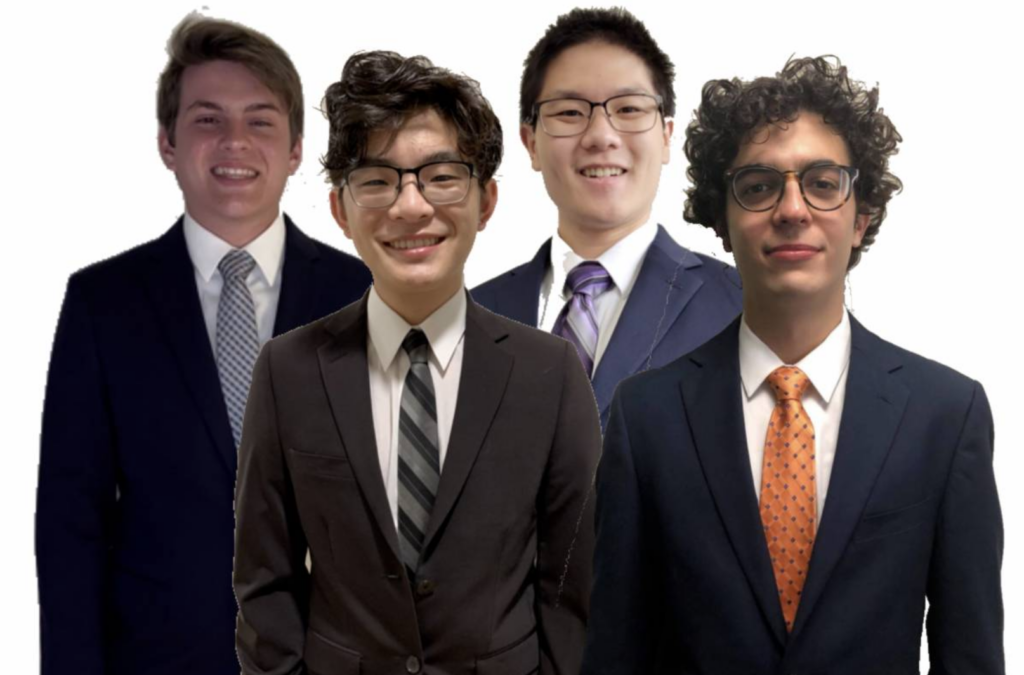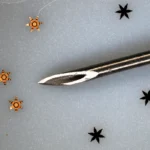Johns Hopkins undergraduate team named finalist in Collegiate Inventors Competition

Innerva’s device helps with the challenges of targeted muscle reinnervation, a surgery facilitating nerve regrowth after amputation
A team of Johns Hopkins University students are among the finalists in the Collegiate Inventors Competition for inventing a device to reduce pain from nerve damage in people with amputations.
Johns Hopkins has had finalists or winners 37 times in the annual competition, which was founded by the National Inventors Hall of Fame to encourage innovation and entrepreneurship at the collegiate level.
Under the team name Innerva, the Whiting School undergraduates invented a funnel-shaped biodegradable device to help direct the regrowth of nerves and prevent the formation of tumors called neuromas that cause severe pain in up to 80% of amputation patients.
The Whiting School students—senior Bruce Enzmann, junior Anson Zhou, and 2021 graduate Michael Lan, who were later joined by junior Juan Diego Carrizo—began the project after hearing from Johns Hopkins surgeon Sami Tuffaha about the challenges of targeted muscle reinnervation, a surgical procedure for facilitating nerve regrowth in amputation patients.
Unlike treatments that stop nerve regrowth completely, this procedure is compatible with advanced prosthetics that use nerve signals to direct movement. A surgeon takes the severed nerve, which is usually larger, and sutures it to a smaller motor nerve, Zhou explained.
“However, because of the mismatch in sizes between the severed nerve and motor nerve, the procedure has around a 30% failure rate,” Zhou said. “Our goal was to address that size mismatch and allow for a tapered regrowth of the nerve.”
The invention has a flexible outer sheath that guides the direction of nerve regrowth and contains a proprietary gel containing a bioactive agent that slows nerve regeneration.
“We’re aiming for an almost paradoxical outcome where we’re facilitating the regrowth of the nerve toward a target muscle, but also preventing it from disorganized overgrowth,” Zhou said.
Team advisor Hai-Quan Mao, associate director of the Johns Hopkins Institute for NanoBioTechnology, said the students’ organizational and leadership skills were critical for the success of the device. Enzmann noted that an interdisciplinary approach among the team members was another key to their success.
“It was also really important that we were able to work across departments,” Enzmann said. “Some of us are materials science and engineering majors and some are biomedical engineering majors and we each brought our different interests and training to the problem.”
Early studies show that the device enhances normal nerve growth, prevents neuroma, and reduces pain and muscle atrophy in the area fed by the motor nerve. The team has secured a provisional patent and plans to conduct additional studies before hopefully moving to clinical testing.
As finalists, the team will present their inventions Oct. 13 in a virtual format to a panel of judges composed of the most influential inventors and invention experts in the nation—National Inventors Hall of Fame Inductees and United States Patent and Trademark Office officials. Winning teams will be announced on Oct. 14.
Story by Kait Howard and posted on the Hub on September 13, 2021. Top photo from left, Bruce Enzmann, Anson Zhou, Michael Lan, and Juan Diego Carrizo. Photo credit: National Inventors Hall of Fame.
Related Stories: Team Innerva Awarded Lemelson-MIT Student Prize.
Latest Posts
-
 Johns Hopkins Postdoc Named in Forbes `30 Under 30′ List
December 8, 2025
Johns Hopkins Postdoc Named in Forbes `30 Under 30′ List
December 8, 2025
-
 Micro Grippers: David Gracias Builds Micromachines That Fold, Stick, Swim, and Sense—All Inside the Human Body.
November 20, 2025
Micro Grippers: David Gracias Builds Micromachines That Fold, Stick, Swim, and Sense—All Inside the Human Body.
November 20, 2025
-
 A bold new approach to autoimmune diseases
November 19, 2025
A bold new approach to autoimmune diseases
November 19, 2025


